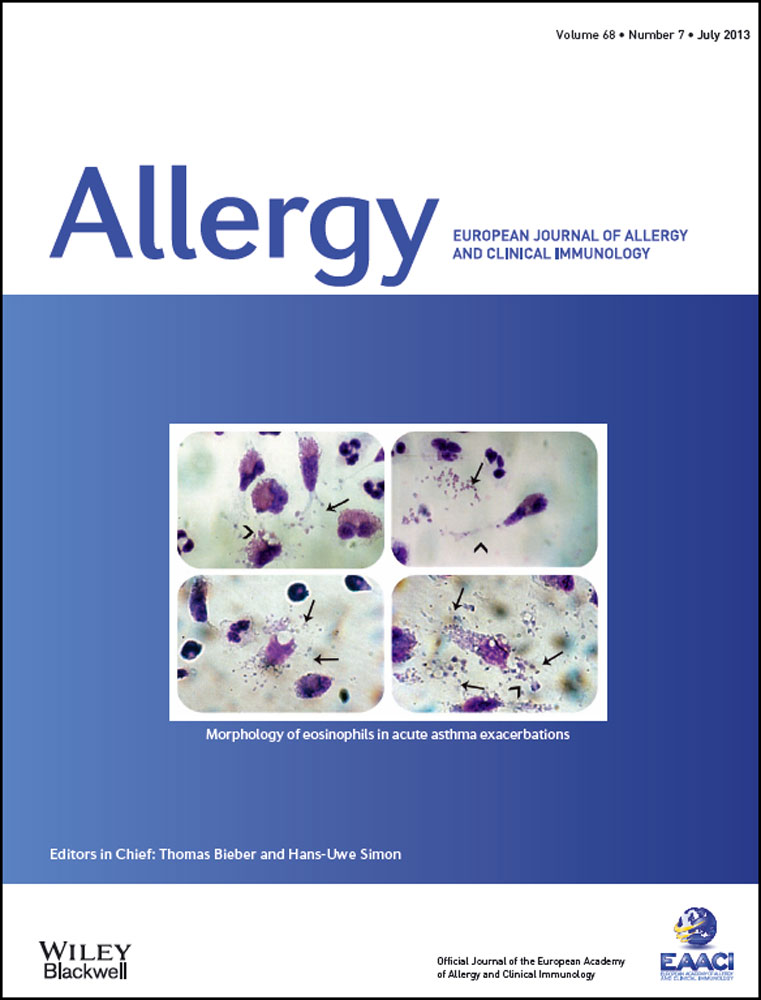Generation and functional analysis of human TNF-α/iNOS-producing dendritic cells (Tip-DC)
Abstract
Background
A unique type of CD11cpos dendritic cells (DC) is abundant in inflamed tissue, for example, in chronic inflammatory skin diseases. Due to their remarkable production of tumor necrosis factor (TNF)-α and inducible NO synthase (iNOS), these cells have been referred to as TNF and iNOS-producing DC (Tip-DC). While Tip-DC have been mainly characterized in murine models of infection, functional data about their human counterpart are lacking.
Objectives
We sought to generate human Tip-DC in vitro und thus provide a new model for the investigation of their phenotype and function.
Methods
We generated human Tip-DC from monocytic precursor cells of healthy individuals, atopic and psoriatic patients using human serum. Resting and stimulated cells were analyzed by flow cytometry, real-time PCR, and by ELISA. INOS activity was measured by fluorometric detection of NO.
Results
Tip-DC closely resembled their in vivo counterparts by expressing CD11c, CD86, and CD40 while lacking CD1a, CD1c, or CD207/Langerin. Bacterial stimulation of Tip-DC from healthy donors, atopic dermatitis, or psoriasis patients resulted in a similar increase in iNOS activity and TNF-α production. In kinetic experiments, TNF-α, a putative activator of Tip-DC, could not induce NOS2. Upon bacterial stimulation, TNFA, IL6, IL12B, and IL23A mRNA appeared in a first wave, while IL12A and NOS2 mRNA were up-regulated later on but not blocked by anti-TNF-α agents, implying a biphasic pro-inflammatory response.
Conclusions
We developed a new model for the study of human Tip-DC and provide the first evidence of their pro-inflammatory capacity.




